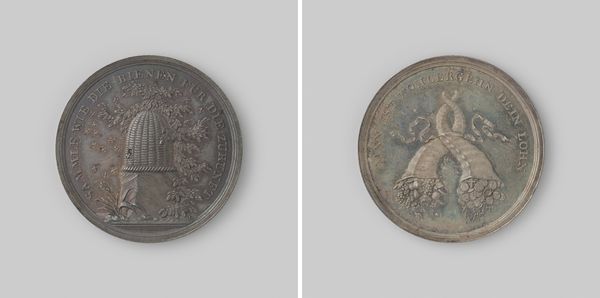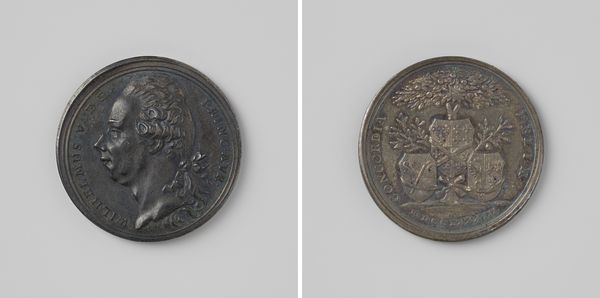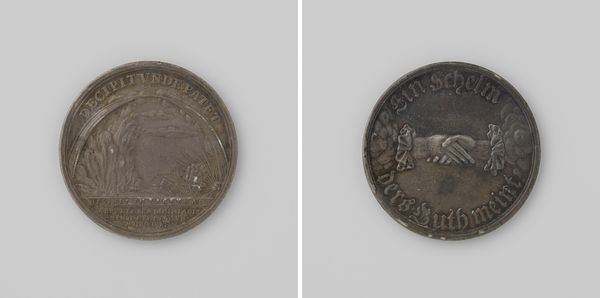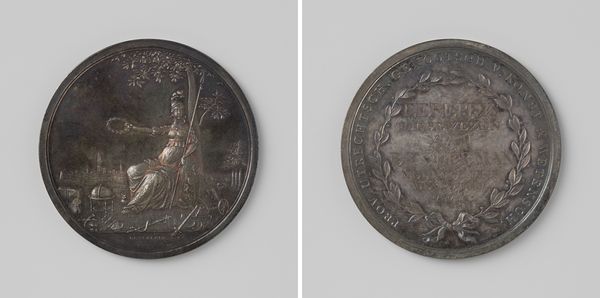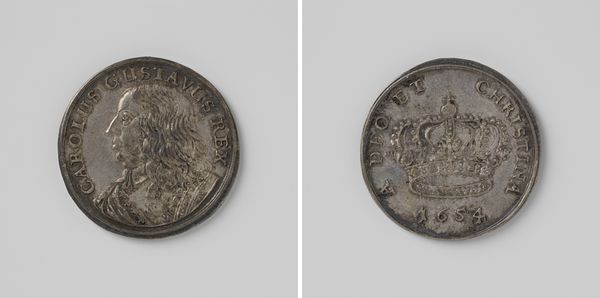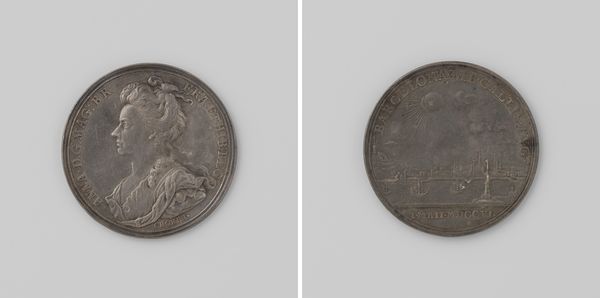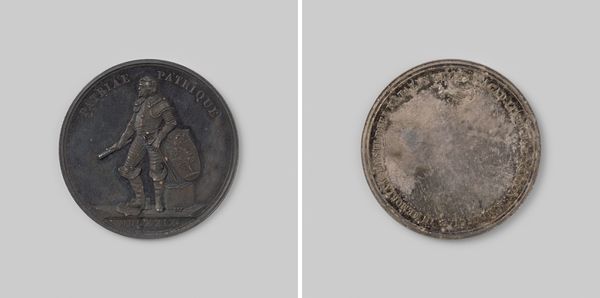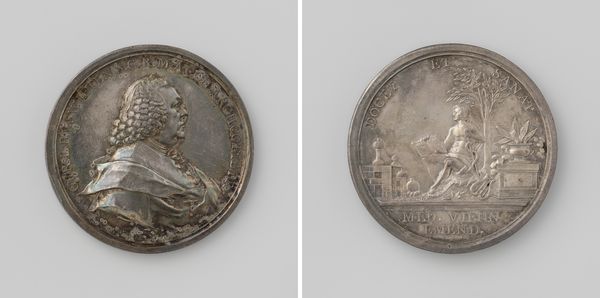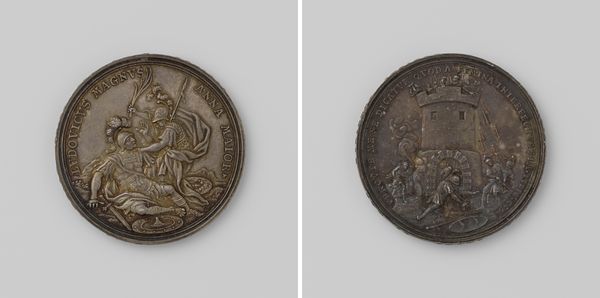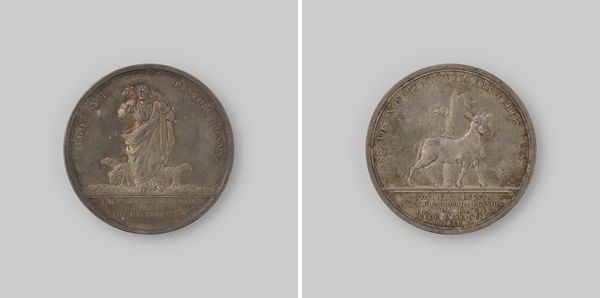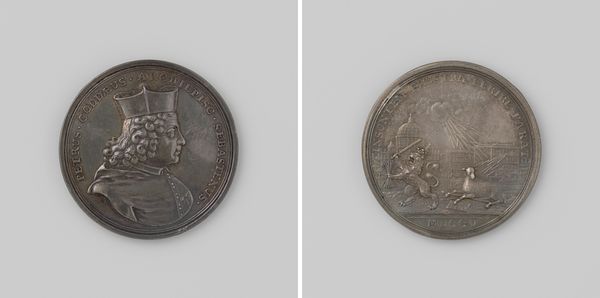
Slag bij Blenheim, ter ere van de hertog van Marlborough en Eugenius, hertog van Savoye 1704
0:00
0:00
#
natural stone pattern
#
3d sculpting
#
3d printed part
#
sculpture
#
detailed texture
#
sculptural image
#
unrealistic statue
#
3d shape
#
stoneware
#
ceramic
Dimensions: diameter 4.7 cm, weight 37.87 gr
Copyright: Rijks Museum: Open Domain
Editor: This double-sided medal, titled "Slag bij Blenheim, ter ere van de hertog van Marlborough en Eugenius, hertog van Savoye" from 1704, presents two distinct scenes cast in metal. I'm immediately struck by the detailed execution, but also the inherent tension in celebrating warfare. What aspects of this medal jump out at you? Curator: Given its function as a commemorative object, the medal's material itself—likely silver or bronze—speaks volumes. Metal’s durability ensured its message would endure. Who was its intended audience? Consider the social context: medals like these functioned as propaganda, valorizing military prowess. Who owned or commissioned these, and what influence did they exert over the production of this piece? Editor: That's interesting. So, its value isn't just artistic, but lies in its role as a manufactured object distributed to serve a specific ideological purpose? Curator: Exactly! Consider the labour involved. Mining the ore, the silversmithing, the distribution: each step represents human agency. What choices were made regarding iconography to convey particular narratives of the battle? How does the scale of the medal –easily portable and replicable– factor into its propagandistic function? Editor: Thinking about it as a reproducible object meant to influence opinion makes me reconsider the imagery. It’s not just about artistry; it's about mass persuasion, right? Curator: Precisely. And that has implications for how we understand artistic agency and craft within this period. Its purpose isn't about pure aesthetics. What happens to our concept of “art” when propaganda is the principal goal, and not the mere act of creation? Editor: That has given me a fresh perspective on how art and history intertwine. Thanks for explaining. Curator: My pleasure. I now appreciate how examining material production illuminates social narratives of artistic creations.
Comments
No comments
Be the first to comment and join the conversation on the ultimate creative platform.
